

LET'S PLAY
MAHJONG


Mahjong is one of the world’s most popular and enduring games. Whether you’re at a family gathering, a quiet tea house, or a high-stakes gambling hall, this tile-based game is both social and strategic. Today, we’re covering the basics of Mahjong—how to play, how to win, and how not to embarrass yourself at the table.

Object
The goal of Basic Mahjong is to complete a 14-tile winning hand before your opponents by forming four sets of three tiles and one pair. These sets can be:
Pong
Three identical tiles
Chow
Three consecutive tiles of the same suit
Kong
Four identical tiles
What You Need
Mahjong is played with 144 tiles, each featuring various symbols, characters, and suits.
The standard tiles include three suits
Bamboos
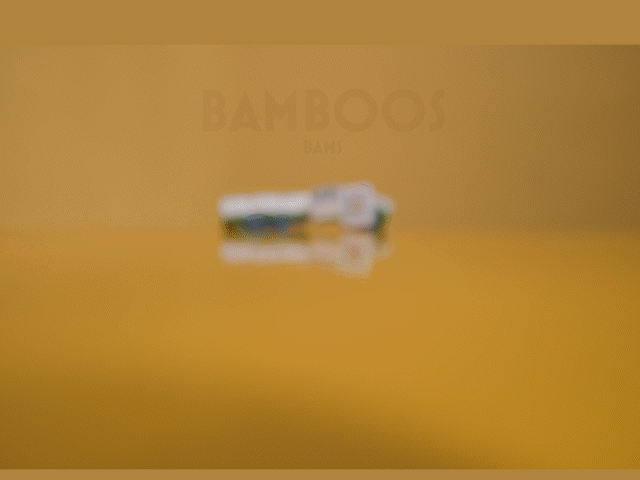
Characters
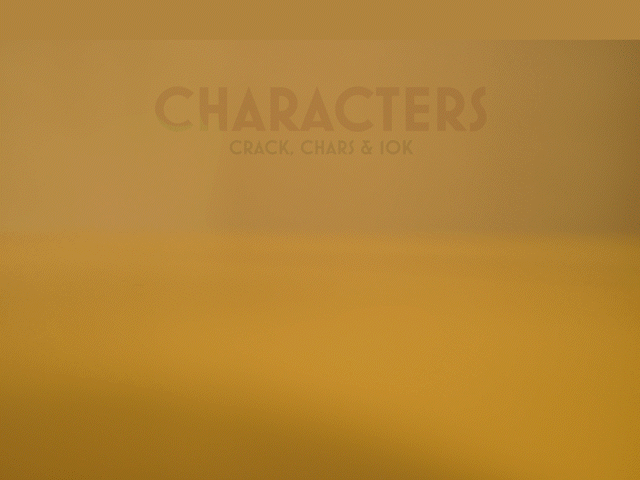
Circles (Dots/Balls/Wheels)
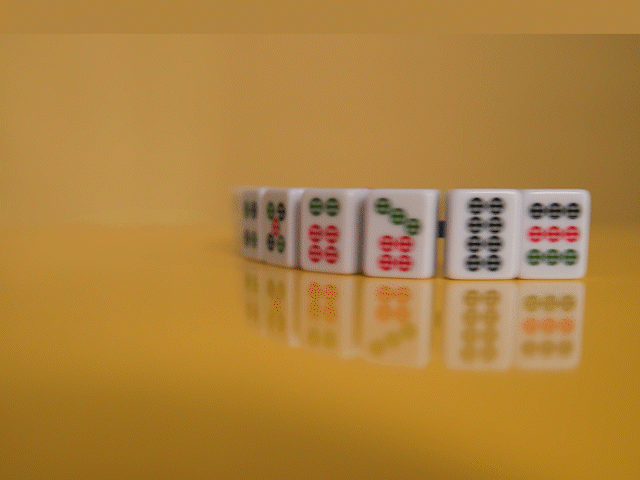
There are also honor tiles: The four Winds—East, South, West, and North
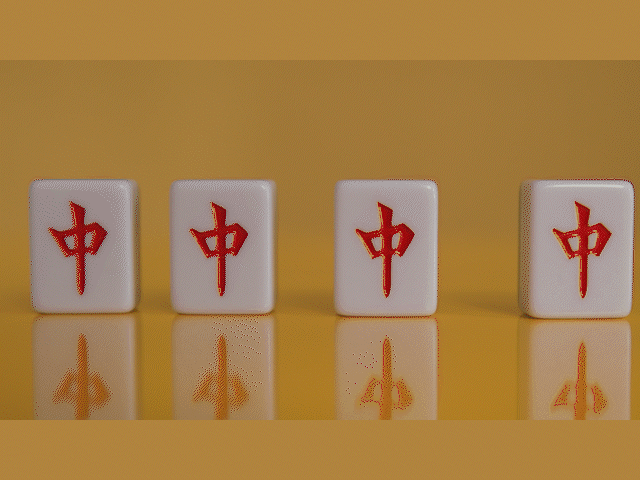
The three Dragons:
Red, Green, and White.

Some variations of the game also include bonus tiles, such as Flowers and Seasons, which provide extra points but are not necessary for forming a winning hand.
Set Up
Group Shuffle
All four players give the tiles a social shuffle, making sure all tiles are face down.
Building the Walls
Each player builds a wall in front of them consisting of two rows of 18 tiles, stacked face down, creating a 36-tile wall per player. Together, players push these in to form a 144-tile square.
Determining the Dealer (East Wind)
The first dealer is determined by rolling two dice. The player with the highest roll becomes the dealer, called the East Wind. The other players are assigned the remaining wind positions: South, West, and North, proceeding counterclockwise.
Breaking the Wall
The dealer rolls 2 dice again to determine where the wall is “broken” for drawing tiles. Counting from their own right side of the wall, they separate a portion of 4 tiles after the position they rolled. For example if they roll a 6, they count 6 tile stacks from the right then take the 7th and 8th tile stacks.
Dealing the Tiles
Each player is dealt 13 tiles, except for the dealer, who receives 14 to start the game. Dealing is done in sets of four, proceeding counterclockwise, until each player has their full hand. The dealer then discards the first tile to officially begin the game.
Step by Step Mahjong Start Up Guide
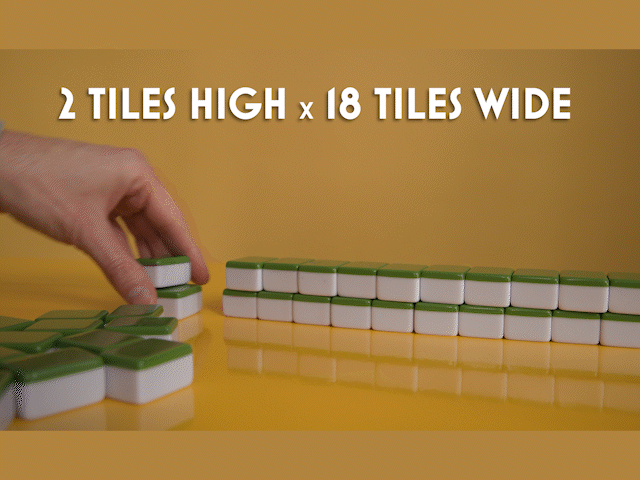
Building the Wall


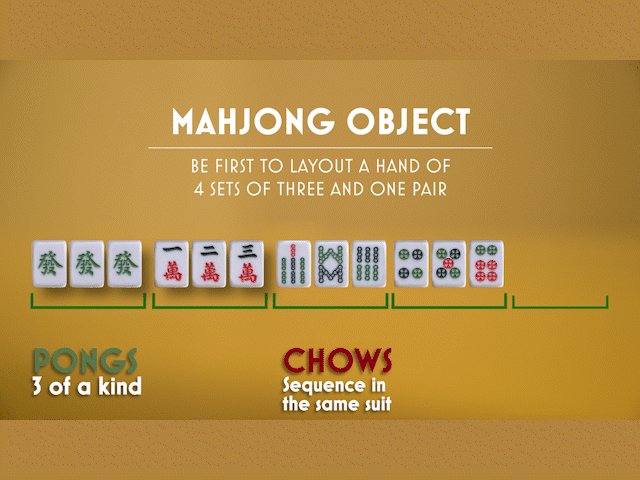
Basic Mahjong Victory Only

Group Shuffle: The Most Satisfying Part of Playing Mahjong.


The 3 Main Suits - Ordered from 1-9
A Complete 144 Tile Set


Game Play
Turn Actions
Each turn in Mahjong consists of drawing a tile and discarding a tile.
A player begins by drawing one and only one tile and it must be the next available one moving to the left of the broken wall.
After drawing, the player must choose one tile from their hand to discard and place it face-up in the center of the table. Players must always maintaining 13 tiles (except when calling Mahjong). They are allowed to discard the tile they just picked.
The discarded tile is now available for immediate claim by other players, but once the next player draws from the wall, that tile is effectively dead and cannot be retrieved.


Claiming a Discarded Tile
Only the most recently discarded tile can be claimed, and it must be done immediately before the next player draws from the wall.
If a player wants to claim the discard for a pong, kong, chow or Mahjong (see more below), they must announce their intention right away, interrupting the normal turn order.
The claiming player then reveals their completed set and places it face-up in front of them before discarding a new tile to continue the game.
If multiple players attempt to claim the same tile, the priority follows a strict hierarchy. A player who needs the tile to declare Mahjong takes priority over any other claim. If no one is declaring Mahjong, a player forming a Kong has the next priority, followed by a player forming a Pong. A Chow has the lowest priority and can only be claimed by the next player in turn order (the player to the immediate right of the discarding player).
Once a tile is passed over and the next player draws, it is considered dead and can no longer be claimed. Players must pay close attention to discards and act quickly if they wish to claim a tile before it is lost.





PONGS
A pong is a set of three identical tiles, such as three red dragon tiles or three 7-dot tiles. A pong can be formed by drawing all three tiles yourself or by claiming a tile discarded by another player when you already have two matching tiles.
If a pong is claimed from a discard, it must be revealed to the table immediately and placed face-up in front of you.
Any player can claim a discarded tile to complete a pong, but once a tile is claimed, the turn order jumps to the claiming player, skipping others.


CHOWS
A Chow is a sequence of three consecutive tiles of the same suit, such as 4-5-6 of bamboo or 7-8-9 of characters.
Chows cannot be made using honor tiles, which include winds and dragons.
Unlike Pongs and Kongs, a Chow can only be claimed from a discard by the next player in turn order.


KONGS
A Kong is a set of four identical tiles. Because a Kong contains four tiles instead of three, declaring a Kong allows the player to draw an extra tile to maintain the correct hand size.
A Kong can be formed in three ways:
-
A concealed Kong occurs when a player draws all four tiles themselves. This is often worth more points in scoring variations
-
An exposed Kong happens when a player claims a fourth matching tile from a discard after already having a pong.
-
A player can also upgrade an exposed Pong into a Kong if they later draw the fourth tile themselves.
Unlike Chows, any player may claim a discarded tile to complete a Kong, but doing so requires revealing the set to the table.


Bonus Tiles
Bonus Tiles, which include Flowers and Seasons, do not contribute to forming Kong, Pong, or Chow. In Chicken Hand-style (Basic) Mahjong, they do not add points but are included to maintain the Wall’s length, ensuring players always draw the correct number of tiles.
When a player draws a Bonus Tile, they must immediately reveal it, set it aside, and draw a replacement tile from the Dead Wall. This prevents the Wall from running out too soon.
While Bonus Tiles have no scoring value in Chicken Hand, advanced Mahjong variations award extra points for them, especially when they match a player’s Wind position. Some versions even grant special bonuses or instant wins for collecting full sets of Flowers or Seasons.


Going Out – Declaring Mahjong
To declare Mahjong, your hand must contain four sets and one pair. A set can be a Pong (three identical tiles), a Chow (three consecutive numbers in the same suit), or a Kong (four identical tiles). A Pair is simply two identical tiles.
Once a player calls Mahjong, the round ends. In advanced play points are calculated based on the value of hand combinations, in this version the first player out wins the match and no other points are recorded. Some games continue for a predetermined number of rounds, while others play until a player reaches a certain point total.
If the Dealer wins, they get to remain as the Dealer. If they lose, all positions shift one place counterclockwise.
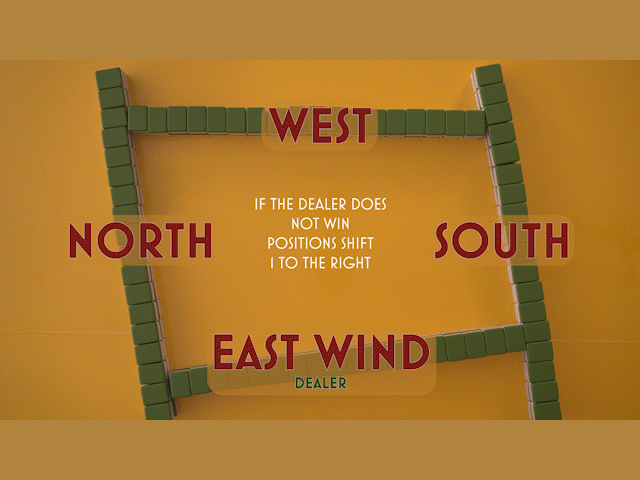

Special Winning Hands & Limits
Some Mahjong variations require specific hand combinations to go out, meaning not just any completed hand is valid. For example, some games require at least one “fan” or scoring element in your hand to be able to declare Mahjong. Other versions allow "Chicken Hand", where any legal hand can win, regardless of its point value. This start up guide is just for "Chicken Hand" Mahjong. Once you have these rules down I recommend you find a group to play with and learn the more advanced ways to score.

Advanced Scoring
These rules have been strictly for beginner play. If you graduate to playing Fan and other advanced styles of Mahjong you will need to know how to score the many, many different point combinations. Here are some great resources to get you started
Chinese Mahjong Scoring: https://playmahjong.io/chinese-official-rules
Mahjong Competition Scoring: https://mahjongtime.com/Chinese-Official-Mahjong-Scoring.html
Japanese Riichi Scoring: https://riichi.wiki/Scoring_table

Final Thoughts
Mahjong is a game of skill, strategy, and a little bit of luck. Whether you’re playing Chicken Hand or diving into the advanced scoring systems, it’s all about understanding the tiles, staying sharp, and knowing when to make your move. Keep an eye on the discard pile, plan your sets carefully, and don’t forget to call Mahjong when you’re ready.
It might take a few rounds to get comfortable, but once you start to see the patterns and get the rhythm of the game, it’s incredibly rewarding. And hey, if you’re lucky enough to pull off that instant win with Flowers or Seasons, enjoy the bragging rights!
Keep playing, stay sharp, and soon enough, you’ll be the one everyone’s trying to beat at the table.






